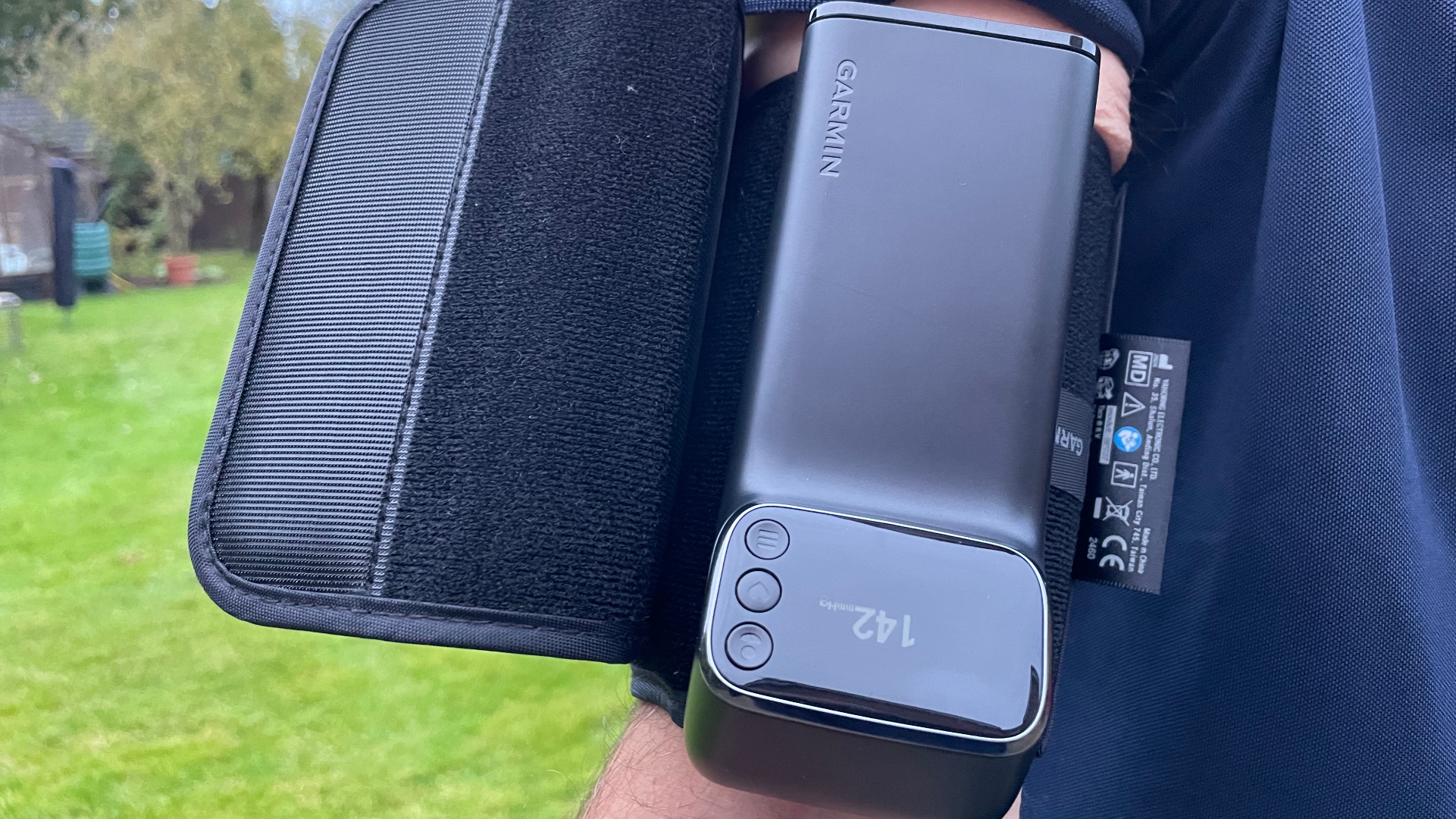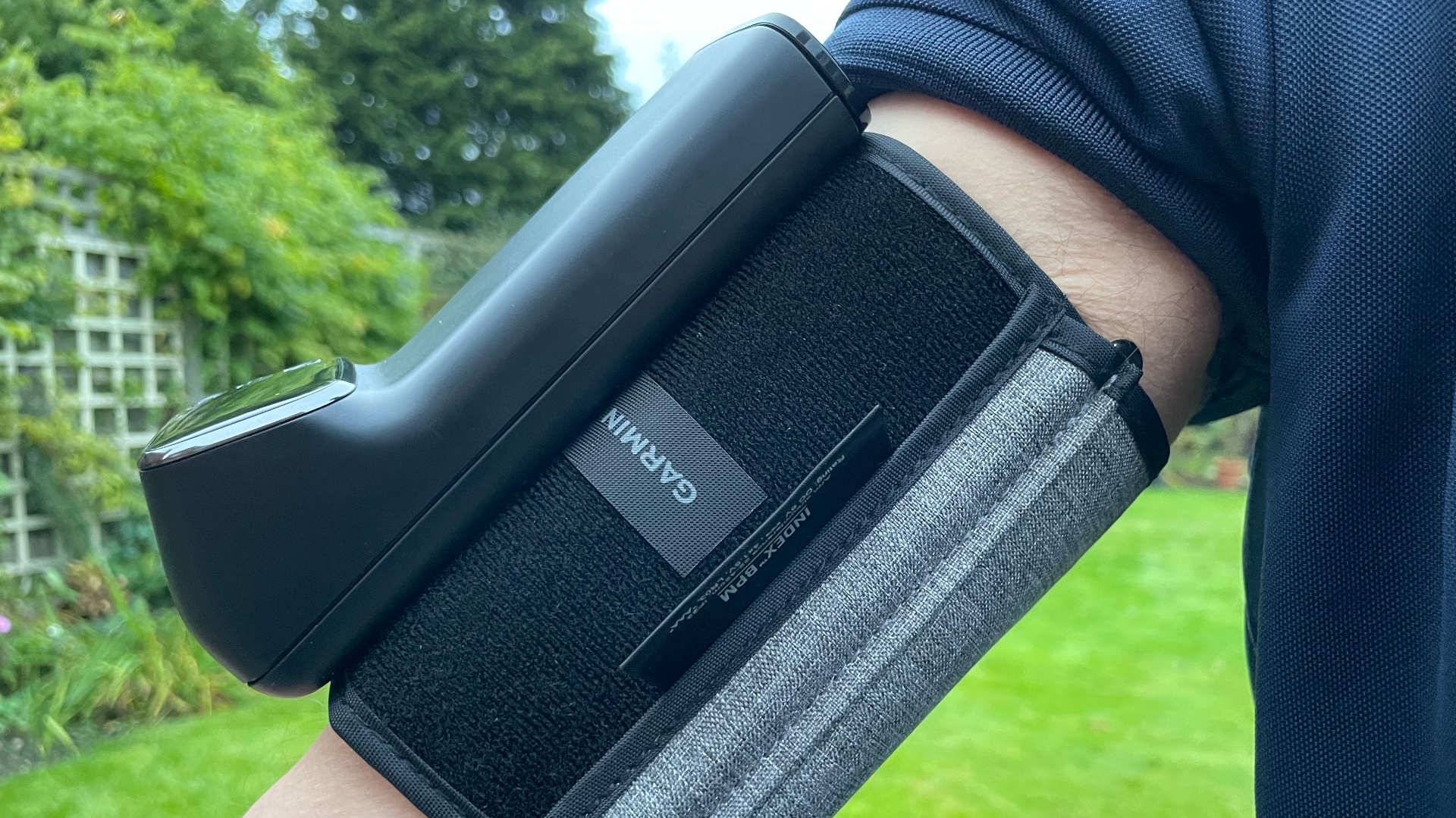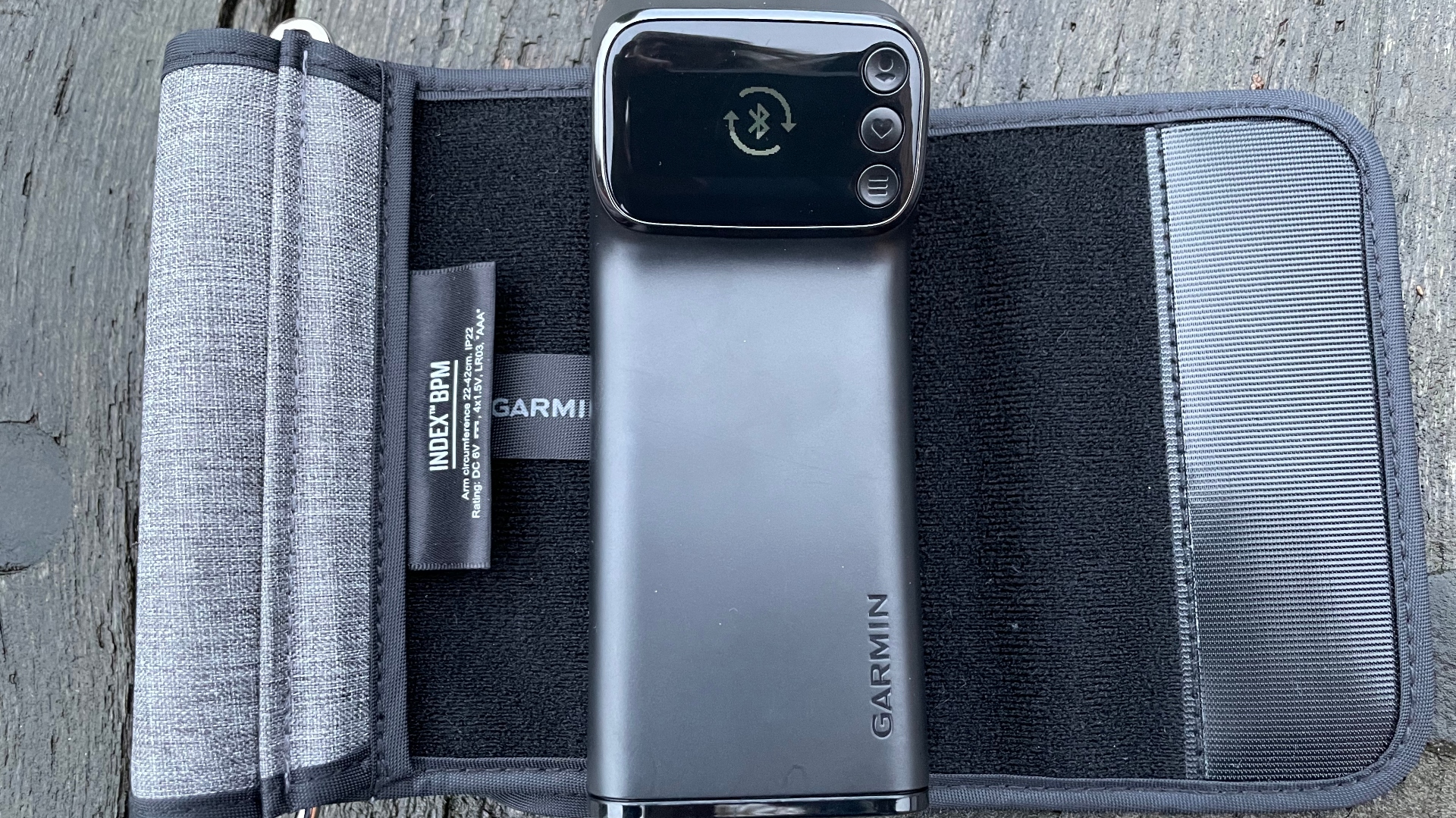
Blood pressure may not be a metric you’re overly concerned about. However, worldwide, high blood pressure is one of the biggest causes of ill health, directly leading to heart disease, stroke, kidney disease and dementia. Cycling can lower your blood pressure, so tracking it should be of interest to anyone who cycles for health as well as fitness.
The Garmin Index BPM (blood pressure monitor) is a device that sits at the intersection of wellness and fitness industries, something we’re likely to see more of in the future.
Design

A traditional home blood pressure monitor consists of a display and pump unit which is connected to an arm cuff by a flexible hose. The Garmin Index BPM is one of a few newer monitors that have a one-piece design where the pump unit is connected directly to the cuff. This allows the overall package to be a good amount smaller, leaving more space in your bedside drawer for all your other gubbins.
To quantify, the Garmin weighs 340g and measures roughly 8 x 8 x 15 cm (as tested). In comparison, my 10-year-old Boots / Omron monitor weighs 450g and is roughly 15 x 12 x 10cm all packaged up.
Interestingly the Garmin doesn’t have an integrated rechargeable battery but relies on four AAAs. Given the modern design, this seems slightly curious and a wasted opportunity for a smaller and lighter unit. Claimed battery life is “up to 9 months” albeit without an indication of actual usage in that time. I’ve had no issues with battery life during four months of testing.
Fitting
The Garmin cuff is suitable for arms from 22 - 42cm in diameter, but its fitting is unnecessarily difficult. And if it’s not fitted properly, you won’t get an accurate reading.
Firstly, as the monitor is mounted directly onto the cuff, it’s awkward to fit as it’s difficult to both stabilise the unit and tighten the cuff at the same time. Perhaps it’s a matter of debate as to how important this is; if you value the more compact design of the cuff-mounted design you may accept this downside. If you accept that a blood pressure monitor is relatively bulky regardless, then you’ll likely find it more annoying.
Regardless of what you think of the cuff-mounted approach, its disadvantage is exacerbated by the design of the cuff itself. The material is quite stiff compared to a traditional cuff and also only has panels of Velcro – rather than a continuous strip – so you have to be more precise as you are pulling the cuff closed. In our testing, this seemed to be an issue on bigger and smaller arms alike.
Accuracy
It’s well established that blood pressure readings, even those that are accurately taken, vary greatly. This is why NHS guidance recommends taking an average of three readings at one time and monitoring your blood pressure over days and weeks rather than relying on a single value.
With all that in mind – assuming you’ve got the BPM cuff fitted correctly – the accuracy of the Garmin Index BPM appeared both reliable and valid for heart rate and BP readings during our testing.
To measure this, I compared measurements from my Omron machine (British & Irish Hypertension Society verified and approved) and the Garmin Index BPM. With a monitor on each arm, I simultaneously took multiple back-to-back readings, one or two times a day for several weeks. There were no consistent high or low discrepancies between the monitors in either diastolic or systolic measurements with readings varying by no more than 2mmHg for each. Heart rate was within one beat per minute for each reading.
If you don’t have the cuff properly fixed readings tend to be significantly off (typically lower by more than 20mmHg) so it’s fairly obvious something is awry.
Connectivity
Connecting the blood pressure monitor to Garmin Connect seemed a little bit more straightforward and more reliable than my watch or head unit. Helpfully, you can program up to 16 different users on a single BPM, all synced to separate Connect accounts, something that isn’t possible on other devices you might share such as head units.
Once connected, the BPM automatically uploads each of your readings into your Garmin Connect dataset. In Garmin Connect you can set your own parameters (e.g. control targets) and then track your pressure data over time, just like any other health and fitness metrics your devices record.
It is also possible to manually record blood pressure data into Garmin Connect if you have taken readings on other devices.
Value and overall

At £159.99 the Garmin Index BPM is a significant investment particularly as there are many, independently validated, blood pressure monitors available for £30-50.
Of course, the Index BPM has the advantage of an automatic, wireless connection to your Garmin Connect account, saving you the hassle of manually recording your readings. On the downside, not only is it much more expensive, but its more compact design makes it much harder to fit onto your arm and take your recordings.






